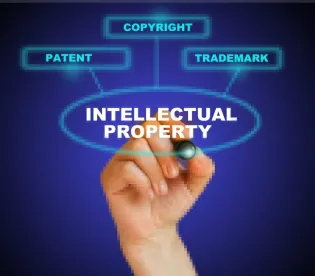EXECUTIVE SUMMARY
Trademark jurisprudence in 2019 may be best summarized in two words: questions and answers. Decisions handed down at the district court level have teed up key questions that are poised to be answered by the United States Supreme Court in the 2020 term—such as the protectability of certain “.com” trademarks, as well as the standard for obtaining particular damages in trademark infringement disputes. For brand owners and trademark practitioners, 2019 will also go down as a year that provided answers to many important questions. For example, on numerous occasions in 2019, the Trademark Trial and Appeal Board answered questions as to whether certain designs or designations have the capability to function as a source-identifying trademark. The United States Patent and Trademark Office (USPTO) answered questions relating to the cannabis industry and how the 2018 Farm Bill would be applied in the review of US trademark applications listing goods or services for CBD products. And, the Supreme Court answered an important question for trademark licensees regarding their rights when a trademark licensor goes bankrupt. This report provides a summary of 2019’s most important questions and answers when it comes to trademark law, and serves as a useful guide for navigating trademark prosecution and enforcement efforts into the year ahead.
TRADEMARKS
TREATMENT OF GENERIC & DESCRIPTIVE MARKS
In 2018, the Court of Appeals for the Federal Circuit clarified the standard for generic terms, and arguably narrowed the field of what could qualify for trademark protection, in Royal Crown Co. v. The Coca-Cola Co (IP Update, Vol. 21, No. 7). The boundary tightening continued in 2019, with the Trademark Trial and Appeal Board (TTAB) issuing a number of decisions refusing registration based on failure-to-function as a trademark. For example:
-
In re Schalk, Serial No. 86183499 (T.T.A.B. Oct. 10, 2019): The TTAB found that consumers were more likely to view the applied-for mark (shown below) as an informational message or opinion rather than as a source identifier for the goods (bumper stickers).

-
In re Ocean Technology, Inc., 2019 U.S.P.Q.2d 450686 (T.T.A.B. 2019): The TTAB found that Applicant’s evidence of consumer perception (four declarations) was insufficient to demonstrate that the relevant consumers recognize the mark (shown below) as identifying the source of the goods instead of as mere information.

-
adidas AG v. Christian Faith Fellowship Church, Cancellation No. 92053314 (T.T.A.B. Nov. 13, 2019): the TTAB found that ADD A ZERO would be understood by the relevant public as informational (and therefore not as a source identifier), but that the design elements of the applied-for mark (shown below) rendered it unitary and therefore registrable.

-
In re Yarnell Ice Cream, LLC, Serial No. 86824279 (T.T.A.B. July 9, 2019): The TTAB found, inter alia, that SCOOP failed to function as a trademark “because, at most, it merely informs purchasers of the serving size of the goods.”
This year, the Supreme Court will hear U.S. Patent & Trademark Office v. Booking.com B.V., No. 19-46, which will determine whether the addition of a generic top-level domain (e.g., .com) creates a protectable trademark when added to an otherwise unprotectable generic term. The dispute centers on the registrability of BOOKING.COM for various travel services, including online hotel reservation services.
Booking.com first filed applications for its BOOKING.COM marks in 2011. The TTAB affirmed the USPTO’s refusals to register, finding BOOKING.COM to be generic for the relevant services. Booking.com appealed to the US District Court for the Eastern District of Virginia, which reversed the TTAB, and—despite the US Courts of Appeals for the Federal Circuit and the Ninth Circuit having previously rejected marks including ADVERTISING.COM and HOTELS.COM— the US Court of Appeals for the Fourth Circuit affirmed the district court, stating the addition of “.com” to “booking” can result in a protectable descriptive mark (i.e., non-generic) where evidence, such as survey evidence, shows that the relevant public is likely to primarily perceive the mark as a source-identifier (IP Update, Vol. 22, No. 3). The US Patent and Trademark Office (PTO) argues, inter alia, that the addition of “.com” should be treated as an entity designation such as “company” or “Inc.,” which only convey the existence of a commercial establishment and typically do not have any source-identifying significance.
Should the Supreme Court create a per se rule that any generic term combined with a generic gTLD results in an unprotectable mark, it could further expand the scope of generic terms. The American Intellectual Property Law Association’s amicus brief cautions against such a rule, arguing that the Trademark Manual of Examining Procedure’s current guidance to review each mark comprised of a generic term with a generic gTLD on a case-by-case basis, is the best course of action. Others, including the PTO, have opined that allowing a registration for BOOKING.COM would have the anticompetitive effect of preventing others from using the term to refer to similar services.
POTENTIAL DAMAGES AVAILABLE IN TRADEMARK INFRINGEMENT CASES
Whether a trademark infringer is required to disgorge profits to a brand owner will come down to whether the justices of the US Supreme Court believe “principles of equity” means that profits are only available if an infringer acted willfully. On January 14, 2020, the Supreme Court heard oral argument in Romag Fasteners, Inc. v. Fossil, Inc., et al., Case No. 18-1233 (S. Ct. June 28, 2019), after granting writ of certiorari in 2019 to consider the issue of whether Section 35 of the Lanham Act requires a showing of willful infringement for a plaintiff to be awarded an infringer’s profit for a violation of Section 43(a). (IP Update, Vol. 20, No. 9) Romag argues the justices should interpret the statute as including a bright-line requirement of willfulness, while Fossil argues the absence of the word “willful” in the relevant statutory provision requires that willfulness be just one factor in the broader inquiry for awarding defendant’s profits.
During oral argument, the justices spent considerable time focused on the meaning of the word “equity” in the Lanham Act—specifically probing whether this term implies willfulness is required. The justices also pressed to understand the consequences of each proposed interpretation, with Justice Kagan suggesting a middle ground between the two approaches in which willfulness is not required but carries significant weight in the analysis—perhaps even creating a presumption that a plaintiff is entitled to defendant’s profits as a measure of damages when willfulness is shown. The questioning by the justices provided insight into their concerns, but did not necessarily show which way they are leaning in their decision.
One place to gain some insight may be from a case recently decided by the Supreme Court—though not cited in the briefing of either party—in which the Supreme Court addressed a related statutory interpretation issue in the patent context. In Peter v. Nantkwest, Inc., No. 18-801 (S.Ct. December 11, 2019) (IP Update Blog, Jan. 2, 2020), the Supreme Court looked at 35 USC § 145—which provides that in district court proceedings brought by a dissatisfied patent applicant, “[a]ll expenses of the proceedings shall be paid by the applicant”—to determine whether this provision requires applicants to pay attorney’s fees incurred by the PTO. The Supreme Court held that the term “expenses” alone provides inadequate guidance to determine whether it should include attorneys’ fees, relying at least in part on the fact that “expenses” and “attorney’s fees” appear in tandem across various other statutes related to shifting litigation costs, convincing the Court the two terms are distinct and not inclusive of each other.
Interestingly, the Supreme Court declined to hear a related, and likely conflicting, trademark case in which the Fourth Circuit examined 15 U.S.C. § 1071(b)(1), which provides that a dissatisfied trademark applicant may seek review of an adverse ruling on his trademark application by commencing a de novo action in a federal district court. Shammas v. Focarino (IP Update, Vol. 18, No. 5). In Shammas, the Fourth Circuit held that § 1071(b)(3) does require a trademark applicant to pay the pro rata share of the PTO’s personnel expenses in defending the trademark action in district court, win or lose. This appears to be in direct conflict with the Nantkwest case.
The decision in Romag will have a broad impact on the value of trademark protection. Requiring willfulness to obtain defendant’s profits is a high bar that is likely to limit remedies available to trademark owners and may deter trademark owners from enforcing their rights.
CANNABIS, CBD, AND TRADEMARKS
US state and federal laws continued to advance the cannabis industry in 2019. Closing out the decade, we saw various federal implementations of the 2018 Farm Bill; Illinois became the 11th state to legalize marijuana; a cannabis banking bill was passed by the full House of Representatives; and cannabidiol (CBD), a non-psychoactive derivative of cannabis, flooded the wellness market. As such, 2019 also ushered in further developments in trademark law, allowing the protection and enforcement of marijuana and CBD brands to serve as a key differentiator for those in the industry.
USPTO EXAMINATION GUIDE 1-19
Use of a trademark in commerce must be lawful under federal law to be the basis for federal registration under the US Trademark Act. Therefore, as cannabis remains a Schedule I controlled substance under the federal Controlled Substances Act (CSA), US federal trademark applications listing cannabis-based goods or services must still be refused registration by the United States Patent and Trademark Office (USPTO). With the 2018 passing of the Farm Bill, however, the federal government removed “hemp” from the CSA’s definition of marijuana, thereby removing qualifying CBD—containing 0.3% THC or less—from the controlled substances list. To keep up with the law, on May 2, 2019, the USPTO issued updated guidelines (i.e., USPTO Examination Guide 1-19) pertaining to the review of trademark applications listing CBD-related goods and services.
Under the updated guidelines, certain types of CBD-related goods and services will still cause a trademark application to receive an unlawful use refusal from the USPTO, as other federal laws, such as the Food Drug & Cosmetic Act (FDCA), continue to ban foods or dietary supplements containing added CBD. Nevertheless, trademark applications designating goods or related services that fall outside of the FDCA ban, such as CBD-infused skincare products, cosmetics and other non-ingestible topicals, are likely to be approved for federal trademark registration by the USPTO.
GHOSTS OF TRADEMARKS PAST
As trademark protection and enforcement options for cannabis-based products and services continue to evolve with applicable state and federal regulations, a few trademark disputes in 2019 provided reminders regarding the importance of prosecution history estoppel, and how older trademark protection strategies could hinder future enforcement efforts.
-
In Woodstock Ventures LC et al. v. Woodstock Roots LLC, a federal judge ruled that Woodstock Root’s US federal trademark registration for goods identified as “smoker’s articles” could not be used to stop the Woodstock music festival’s namesake company from selling marijuana products under the WOODSTOCK brand, since Woodstock Roots had secured its earlier US trademark registration only by expressly stating that its smoker’s articles would not be used to smoke marijuana.
-
Later in the year, in Kiva Health Brands Inc. v. Kiva Brands Inc., a federal judge ruled that a California edibles company could not assert prior common law trademark rights accrued in the state of California to defend itself against itself against federal trademark infringement claims, since the company’s marijuana-based products remain illegal under federal law.
2020 AND BEYOND…
While the federal legalization of marijuana may not be on the docket for the year ahead, we expect to see further clarification regarding the interplay of federal protections and regulations as they relate to the cannabis industry. At the same time, brand owners in this space will continue to cultivate refined trademark protection and enforcement strategies at the state and federal levels to leverage trademark registrations, common law rights and trademark rights in ancillary goods and services to grow their brands and businesses.
TRADEMARK LICENSES IN BANKRUPTCY
In May 2019, with its ruling in Mission Products Holding Inc. v. Tempnology, the US Supreme Court resolved a nationwide circuit split regarding what happens to a trademark license when the trademark owner and licensor declares bankruptcy. In an 8–1 decision, the Supreme Court held that rejection of a trademark license in bankruptcy constitutes a breach of the license agreement, which has the same effect as a breach outside bankruptcy in that a licensor’s rejection of a trademark license agreement does not rescind or terminate the licensee’s rights under the agreement, including the right to continue using the mark.
Section 365(n) of the Bankruptcy Code clarifies that the rights of an intellectual property licensee to use the licensed IP cannot be unilaterally cut off after the rejection of the license in bankruptcy. Under the Code, however, the definition of “intellectual property” does not include trademarks. Courts were thus split as to whether a trademark licensee retains the ability to use a debtor-licensor’s marks after the corresponding license is rejected in bankruptcy. The SCOTUS majority provided necessary clarification, holding that the debtor-licensor’s rejection cannot revoke the trademark license.
Heading into 2020, the high court’s interpretation of Section 365 of the Bankruptcy Code provides trademark licensees with some certainty regarding their rights to a licensed trademark in the event of the licensor’s bankruptcy. Nevertheless, open issues remain post-Mission Products. For example, because trademarks continue to fall outside of the Section 365(n) definition of “intellectual property,” the SCOTUS decision may not apply to every trademark license and licensee, since a party’s rights may be impacted by “applicable non-bankruptcy law,” such as special contract terms in a license agreement, or certain applications of state law. It also remains unclear as to whether a trademark licensee with exclusive rights can maintain such exclusivity after rejection of the license. As economists continue to forecast a recession in the year or two ahead, the Mission Products decision and remaining open questions regarding the treatment of trademark agreements in instances of bankruptcy may continue to build relevant jurisprudence and guide the drafting of trademark license agreements going forward.
2020 OUTLOOK
As we await further answers to our most pressing trademark questions in 2020, we anticipate that this year will bring unique opportunities to apply traditional tenets of trademark law to modern-day disputes and business considerations. So long as marketing efforts continue to incorporate influencers, short-form and interactive content, artificial intelligence, blockchain technologies, and other initiatives to elevate brand profiles, trademark practitioners and the courts will need to be creative in applying traditional interpretations of relevant trademark laws and policies to trademark protection strategies and infringement disputes. In 2020, the USPTO also will be forced to continue to address the ever-crowded brand space by furthering its crack-down on fraudulent trademark applications, clearing dead weight from the USPTO register, and maintaining its strict registrability and failure-to-function assessments to make room for new and growing brands. Finally, in 2020 and beyond, we expect that trademark considerations will continue to color other legal matters and disputes, including corporate transactions, data ownership and privacy, and bankruptcy and restructuring, thus showing the immense commercial value and power of brands.





 />i
/>i

